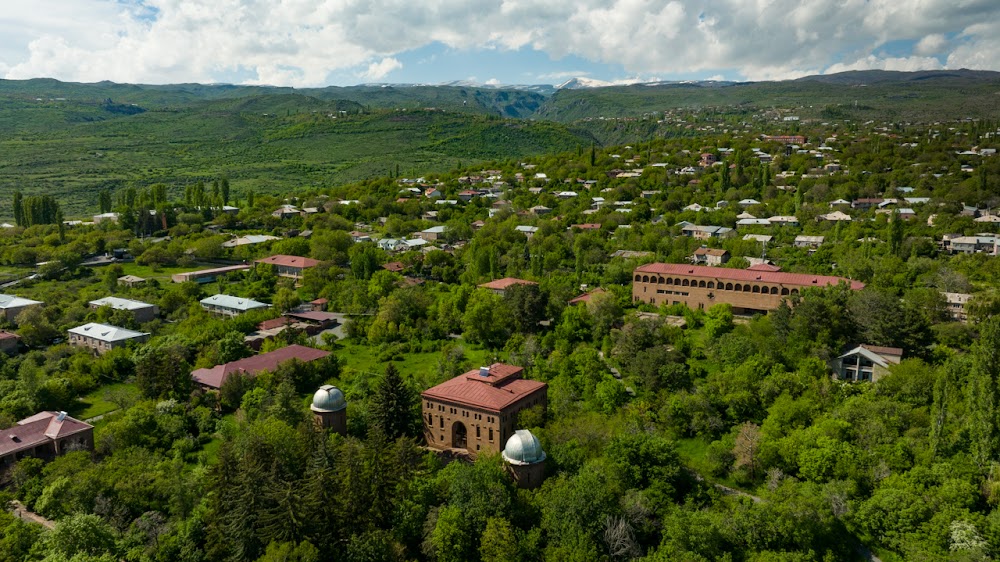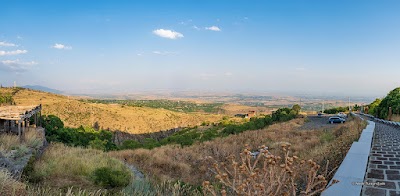Tegher Monastery (Թեղերի վանք)
Overview
Tegher Monastery, nestled in the stunning **Aragatsotn Region** of Armenia, is a remarkable example of medieval Armenian architecture. Founded in **1213** under the patronage of **Princess Khatun**, the wife of the notable noble **Prince Vache Vachutyan**, this monastery showcases the artistic vision of the acclaimed architect **Aghbayrik**, who beautifully combined spiritual harmony with structural resilience.
Constructed primarily from **basalt**, Tegher Monastery is distinguished by its striking dark hue, which harmonizes seamlessly with the surrounding landscape. The centerpiece of the site, the **Surb Astvatsatsin** (Holy Mother of God) church, exemplifies traditional Armenian architectural style with its central-dome design supported by four massive pillars. This classic layout not only enhances the aesthetic appeal but has also ensured the structure's stability, despite the region's occasional seismic activity.
The monastery's exterior is adorned with **intricate carvings** and ornamental details that reflect the exceptional craftsmanship of medieval Armenian masons. Inside the Surb Astvatsatsin, visitors are greeted by stunning frescoes, decorative stonework, and inscriptions that echo the spiritual and cultural aspirations of the era. These artistic elements contribute to a serene and contemplative atmosphere, making the space truly sacred.
In addition to the main church, Tegher Monastery comprises several auxiliary buildings, including a **gavit** (narthex), a refectory, and monks’ quarters. The gavit serves as a welcoming gathering space for pilgrims and visitors, providing a transitional area before entering the heart of the church. While more modestly decorated, this space still showcases the rich tradition of Armenian stone artistry.
The breathtaking **surroundings** of Tegher Monastery, framed by the majestic peaks of **Mount Aragats**, add to its allure. The choice of location likely reflects both the need for tranquility essential for monastic life and the stunning views of the **Aragatsotn plains**, creating an ideal setting for prayer and reflection.
Throughout its history, Tegher Monastery has played a vital role not just as a religious center, but also as a **cultural and educational hub**. During the medieval period, it became a significant site for manuscript production and theological study. The monks here contributed immensely to Armenian literature and scholarship, preserving many important religious and historical texts.
Over the years, Tegher Monastery has undergone several periods of **renovation and restoration** to maintain its historical and architectural significance. Despite the challenges posed by time and nature, ongoing efforts have ensured that the monastery remains a vital part of Armenia’s rich cultural heritage.
In contemporary times, Tegher Monastery continues to draw visitors from around the globe. **Pilgrims, historians,** and **tourists** alike come to admire its architectural beauty, delve into its rich history, and experience the peaceful ambiance that has enveloped this site for over eight centuries.
Tegher Monastery stands as a testament to the enduring spirit of Armenian religious and cultural traditions. It reflects a legacy of **faith, artistry,** and **resilience**, offering a unique glimpse into the monastic life that has profoundly shaped Armenia’s history. The fusion of natural beauty and human creativity at Tegher makes it a cherished landmark in the **Aragatsotn Region**.









